Affiliate links on Android Authority may earn us a commission. Learn more.
The most common Fitbit problems and how to fix them
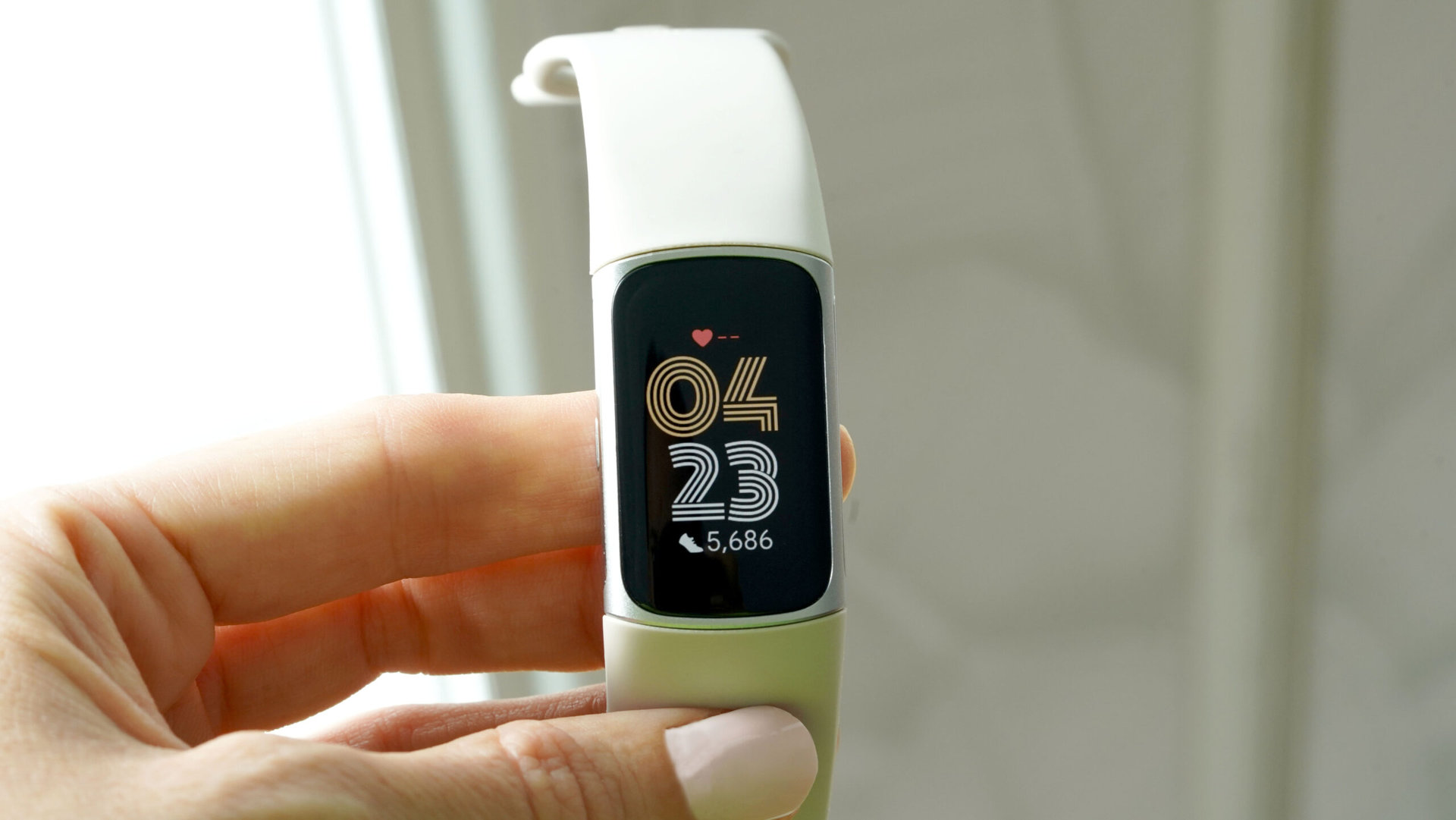
What happens when your fitness tracker stops working? That happens more often than expected, especially considering how often fitness trackers get used daily. If you own a Fitbit device — and I’m sure many of you do — you may have experienced a problem or two throughout your device’s lifetime. If you’re having issues with your Fitbit device, we’re here to help. Here are some of the most common Fitbit problems and how to fix them.
Additionally, browse our Google Pixel Watch problems and solutions guide for Fitbit issues relating to Google’s smartwatches.
QUICK ANSWER
If you're facing a problem with your Fitbit device, the quickest way to resolve it is to restart your tracker. If this doesn't work, consider other solutions, like reinstalling the Fitbit app on your phone or resetting your tracker in more serious circumstances. If you suspect your device has a hardware issue, consider contacting Fitbit.
JUMP TO KEY SECTIONS
- Fitbit Charge 6 issues
- Fitbit app and service issues
- Syncing issues
- Time and clock issues
- Screen issues
- Notification issues
- Charging issues
- Quick View and tap recognition issues
- Update issues
- Alarm issues
- Band issues
- ECG issues
- Battery issues
- Button issues
- Health tracking issues
- How to restart your Fitbit
Fitbit Charge 6 issues
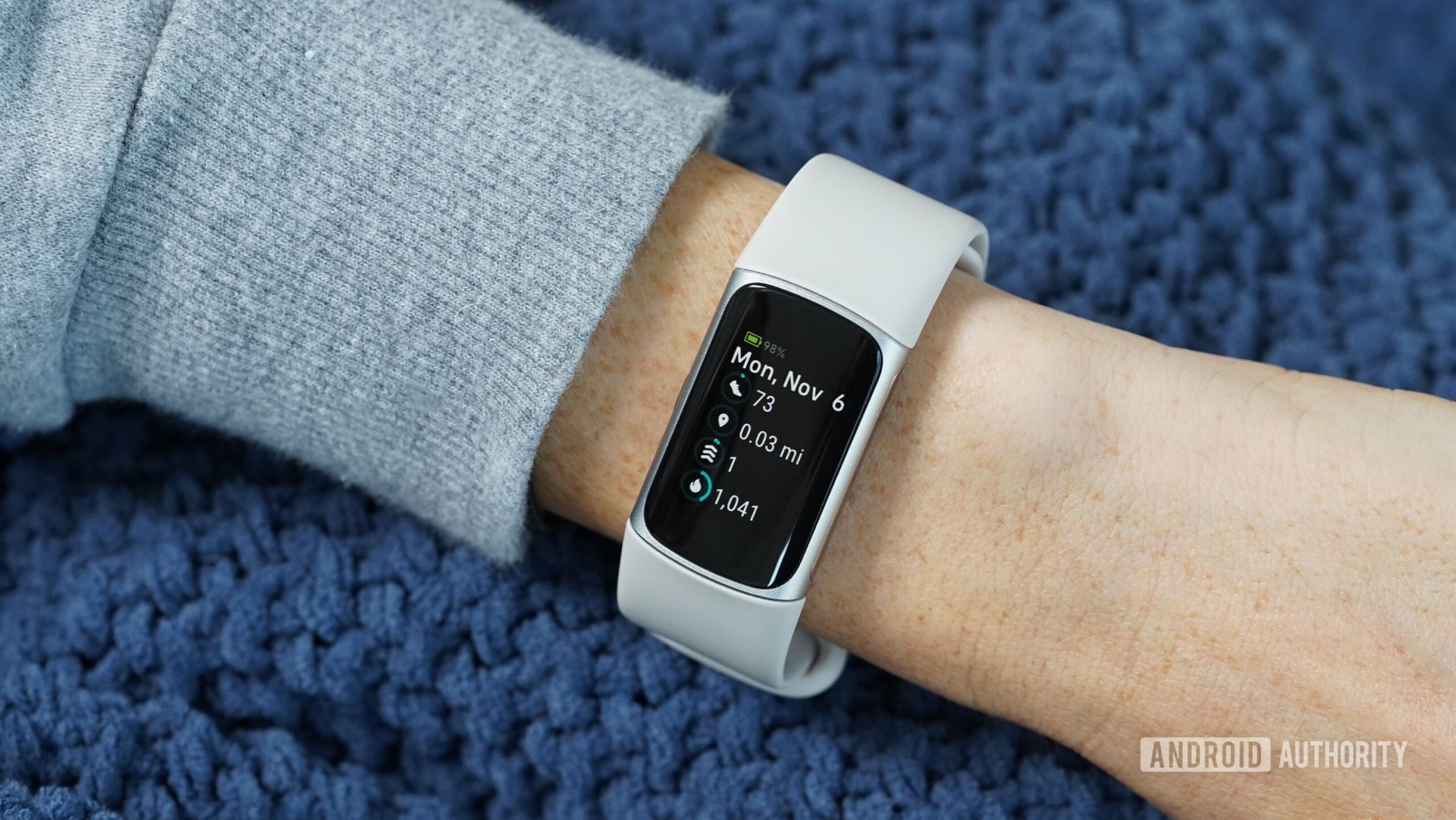
Fitbit’s newest and greatest fitness tracker builds on its predecessor in several ways, but you might encounter a few problems with the device. Here are the more common Fitbit Charge 6 issues and their solutions.
The Fitbit Charge 6 is in a restart loop
Reboot loops are usually the result of hardware or software issues with your device. In the case of the Charge 6, the problem may be grounded in the latter. In this case, try hard rebooting the device.
- Place the Charge 6 on its charging cable.
- Press the button on the charge three times within eight seconds.
- Wait for the Fitbit logo to appear. It could take up to 10 seconds.
- If this doesn’t resolve your issue, try again after waiting a few minutes.
It’s also a good idea to hold off installing updates for a few weeks after Fitbit releases them. This is a good way to ensure the update is stable and problem-free before committing your device to it.
The Fitbit Charge 6 won’t sync
Generally, when any Fitbit device fails to sync with Fitbit’s server, the problem lies with Fitbit itself. The company’s services may be facing an issue or an outage. In this case, all you can really do is wait for Fitbit to resolve the issue. Alternatively, you can try restarting your smartphone and Charge 6.
The Charge 6 battery is draining too fast
If you just activated your Charge 6, you can expect a higher-than-normal battery drain for the first few days. However, consider these common fixes if this problem persists in the weeks ahead.
- Disable always-on display. Generally, the screen is a wearable device’s biggest battery hog.
- Disable GPS when it’s not required. You likely won’t need to connect to positional satellites if you aren’t training or navigating your surroundings.
The Charge 6 isn’t vibrating
If your Charge 6 isn’t vibrating, usually the fix is switching off sleep mode. Sleep mode will disable all notification triggers, including vibrations.
- Open the Settings app.
- Select Quiet modes.
- Toggle off Sleep Mode.
Once sleep mode is disabled, your Charge 6 should vibrate.
Fitbit app and service issues
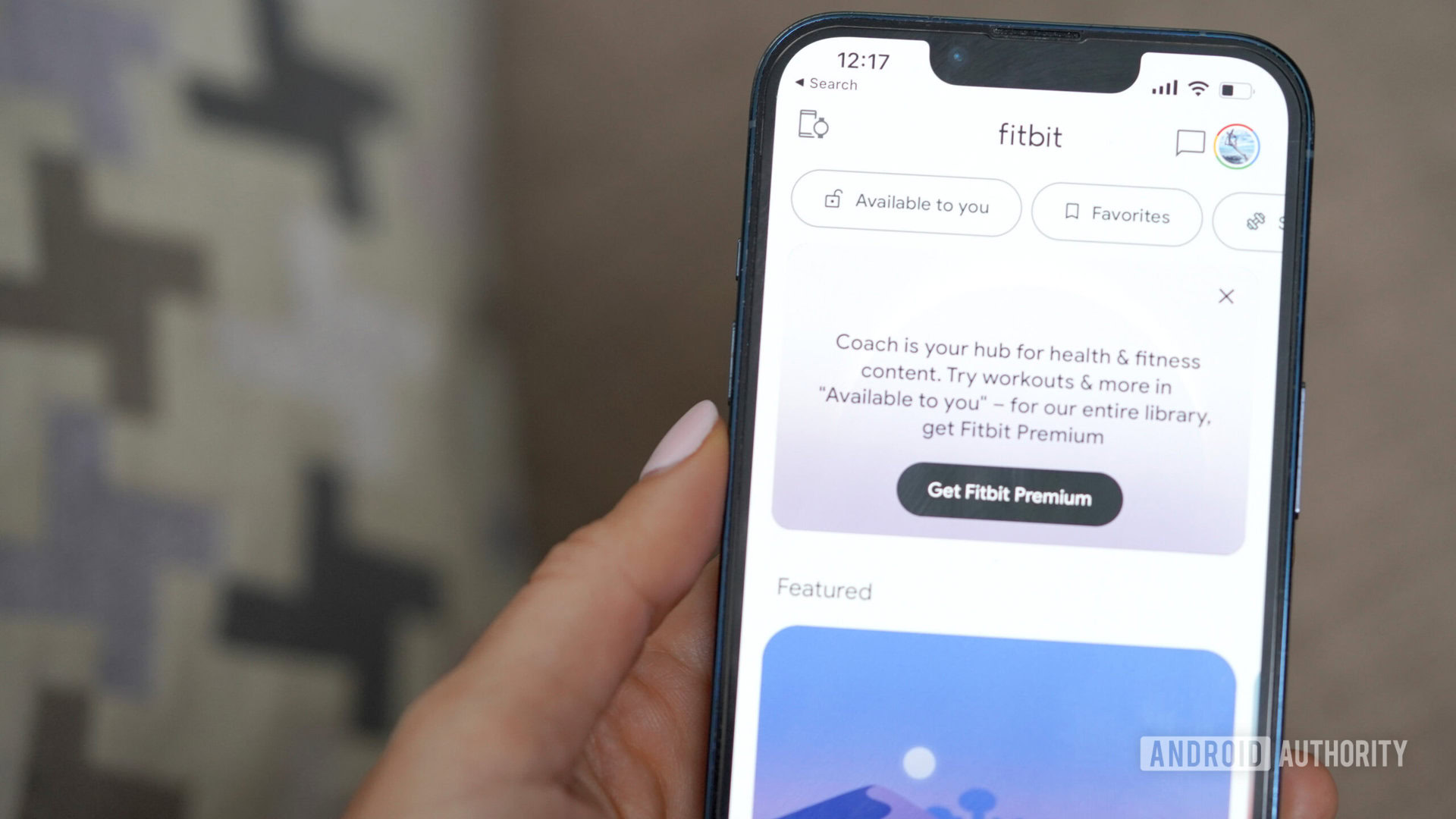
If your Fitbit device fails to sync with your app, Fitbit might be facing a service outage. Here’s how to check if this is the case.
- Visit Fitbit’s Fitbit Support page on X (formerly Twitter). The account usually posts updates relating to service issues and other problems. It hasn’t posted in almost a year, but that’s a good sign!
- Alternatively, website status sites like Downdetector are a good way to understand if there’s a budding problem with Fitbit’s service.
- Notably, if your Fitbit app ever “forgets” your smartwatch or tracker, it’s likely an issue related to the app or Fitbit backend itself, not your device.
Potential solutions
If there are no known issues with Fitbit’s service, the problem might lie with the app itself.
- Try restarting your phone and Fitbit.
- If this doesn’t solve your issue, try killing the Fitbit app.
- Head to Settings on your phone > Apps >, find the app you want to stop, tap on it, then select Force Stop.
- Wait a few moments, then tap the Fitbit app’s icon on your home page or app drawer to start it again.
- Check if there’s a new version of the Fitbit app and update it if there is.
- Alternatively, uninstall the Fitbit app, clear all related data, and then reinstall the app.
- Fitbit also suggests switching off your phone for one to two minutes.
Third-party app problems
Remember that the Fitbit Sense 2 and Versa 4 do not support third-party apps. You won’t see any option to download these on the Fitbit Gallery if you own one of these devices.
Importantly, Google is removing third-party apps and clock faces from the Fitbit app gallery starting in June 2024. Importantly, this change only affects EU users. EU users will still have access to third-party products that are installed on their devices or saved to their libraries, but they won’t be able to download any new items. The change will affect the Sense 2, Sense, Versa 4, Versa 3, Versa 2, Versa, Versa Lite, and Ionic.
Can you revert to the old Fitbit app?
Fitbit and Google pushed a new app update in the fall of 2023, bringing Google-inspired design cues. Generally, sentiment surrounding this app update has been negative, and many users prefer the older version. So, is there a way to revert to the old Fitbit app?
No, there is no way to revert to the old Fitbit app once you’ve updated.
Why is my Fitbit app not working on my iPhone?
The fixes outlined above will likely work if you’re experiencing Fitbit app issues on your iPhone. However, the app may crash on Apple’s platform. If the Fitbit app continues to crash on your iPhone, ensure that the latest version of the app is installed.
Syncing issues
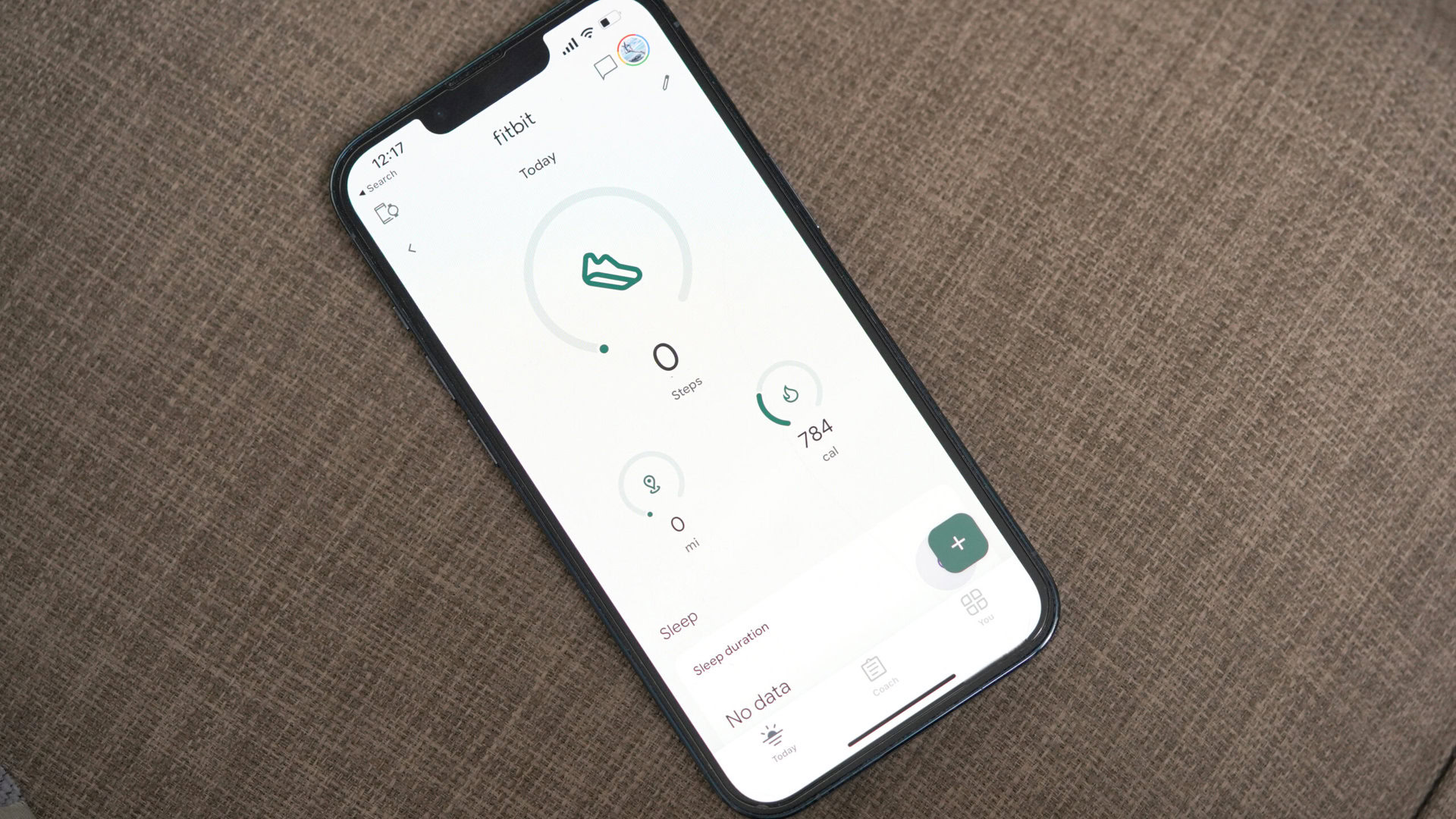
Fitbit trackers sync with Android devices via Bluetooth; unfortunately, that technology can be unreliable. If you have trouble syncing data from your Fitbit to your Android device, your solution may lie in your Fitbit app’s Settings menu.
Potential solutions
- Make sure you install the Fitbit app on your phone. You’ll also need to ensure your phone has Bluetooth turned on (Settings > Bluetooth > On) and that you’re only trying to connect your Fitbit to one Bluetooth-enabled phone or tablet.
- Try removing and re-adding your Fitbit device from your Fitbit account. Open the Fitbit app, select your account photo, select your tracker, then tap the trash icon in the top-right corner. Select unpair. You can then pair your Fitbit device with your Fitbit account.
- If your smartphone is running Android 6.0 Marshmallow or later (it probably is), you may need to manually grant the Fitbit app permission to scan for Bluetooth devices.
- To do so, head to your phone’s Settings menu, select Apps & notifications, select Permission manager, choose Location, select Fitbit, then make sure the Allow all the time option is selected.
- In addition, you need to switch on your phone’s location services to scan for Bluetooth devices. To do so, head to your phone’s Settings menu and select Location. Once you’re there, turn on the Location toggle at the top of your screen.
- You may need to force quit the Fitbit app. From your mobile device, head to Settings > Apps & notifications > See all apps > Fitbit > Force Stop.
- Alternatively, press and hold the Fitbit app icon on your home screen and release it when you feel a vibration. Tap the small i icon. Then tap Force stop.
- Try turning Bluetooth off and on again. From your mobile device, head to Settings > Bluetooth, then toggle Bluetooth off, then on. You can also turn off the Bluetooth toggle by tapping the icon in your quick settings panel.
- Try restarting your mobile device.
- If all else fails, try uninstalling and reinstalling the Fitbit app.
Time and clock issues
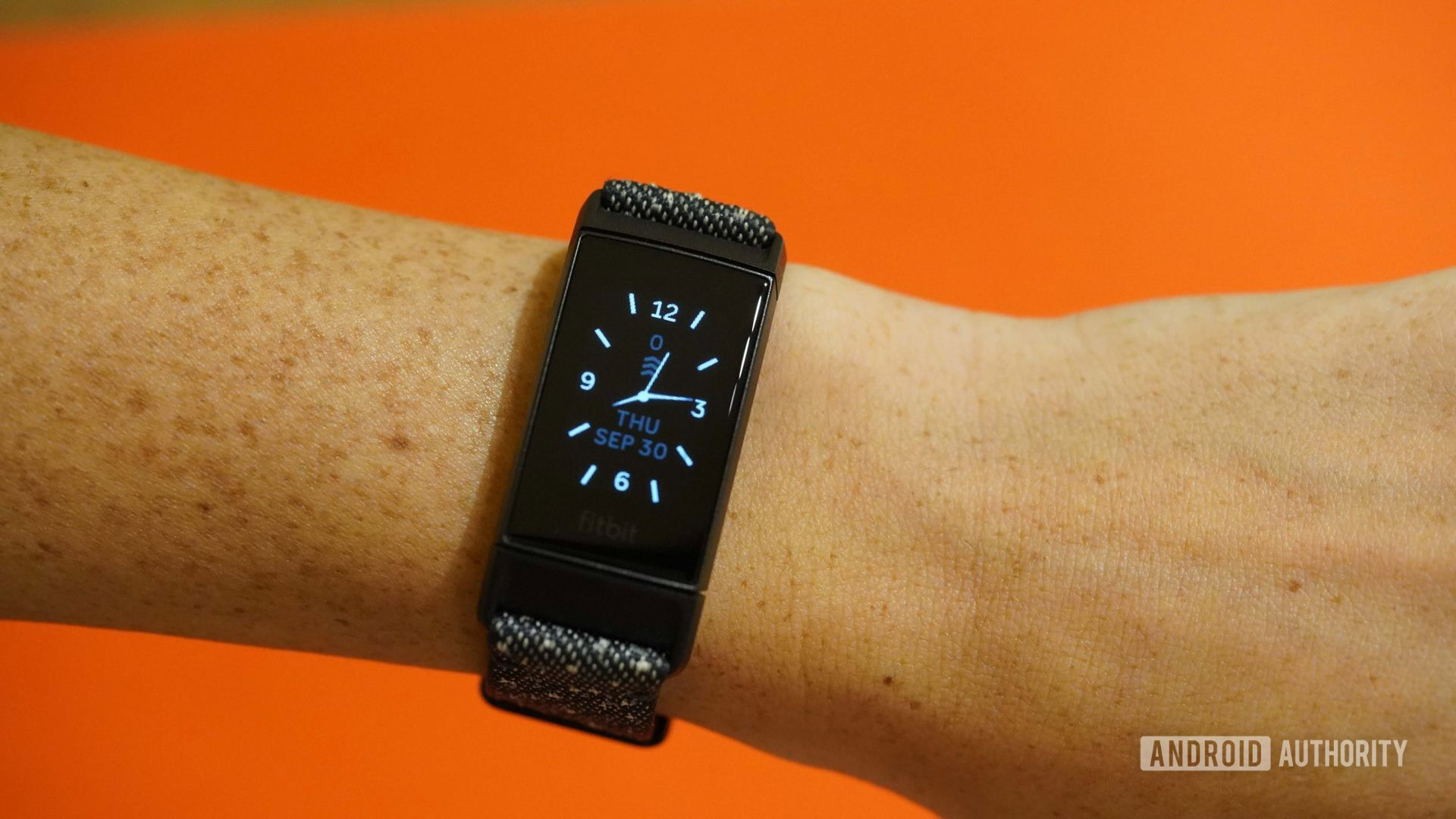
Smartwatches might be loaded with sensors and fancy features, but their primary task is to display the right time, as the name suggests. If your Fitbit shows the incorrect time, here’s how to correct it quickly.
Time issues
- To correct your Fitbit’s time, tap the Today tab, then Fitbit settings if you’re signed in with Google or the settings cog if you’re signed in with Fitbit. Select Date, time & units > Time Zone > toggle off Set Automatically, then select your preferred time zone. Finally, sync your Fitbit. Your tracker should now display the right time.
- To switch between 12- or 24-hour time: Tap the Today tab, then Fitbit settings if you’re signed in with Google or the settings cog if you’re signed in with Fitbit. Select Date, time & units > Clock Display Time > select your preference. Sync your Fitbit when complete.
Clock face issues
Sometimes, your Fitbit device may not successfully implement a new clock face. There’s no clear-cut fix from Fitbit for this issue, but you can try a few things to remedy it.
- First of all, try installing a Fitbit-made clock face. If this is successful, the problem lies with the clock face you’re trying to install. If the issue lingers, we’ll need to troubleshoot other potential issues.
- Try restarting your smartphone and Fitbit. Instructions on how to do this for your particular model can be found at the foot of this article. Once both devices are up, try changing your clock face once more.
- If the above step didn’t fix your problem, double-check that no software updates are available for your smartwatch, tracker, or Fitbit app. If there is an update available for any of these, update them.
- If all else fails, consider factory resetting your Fitbit. This should remedy the problem.
Screen issues
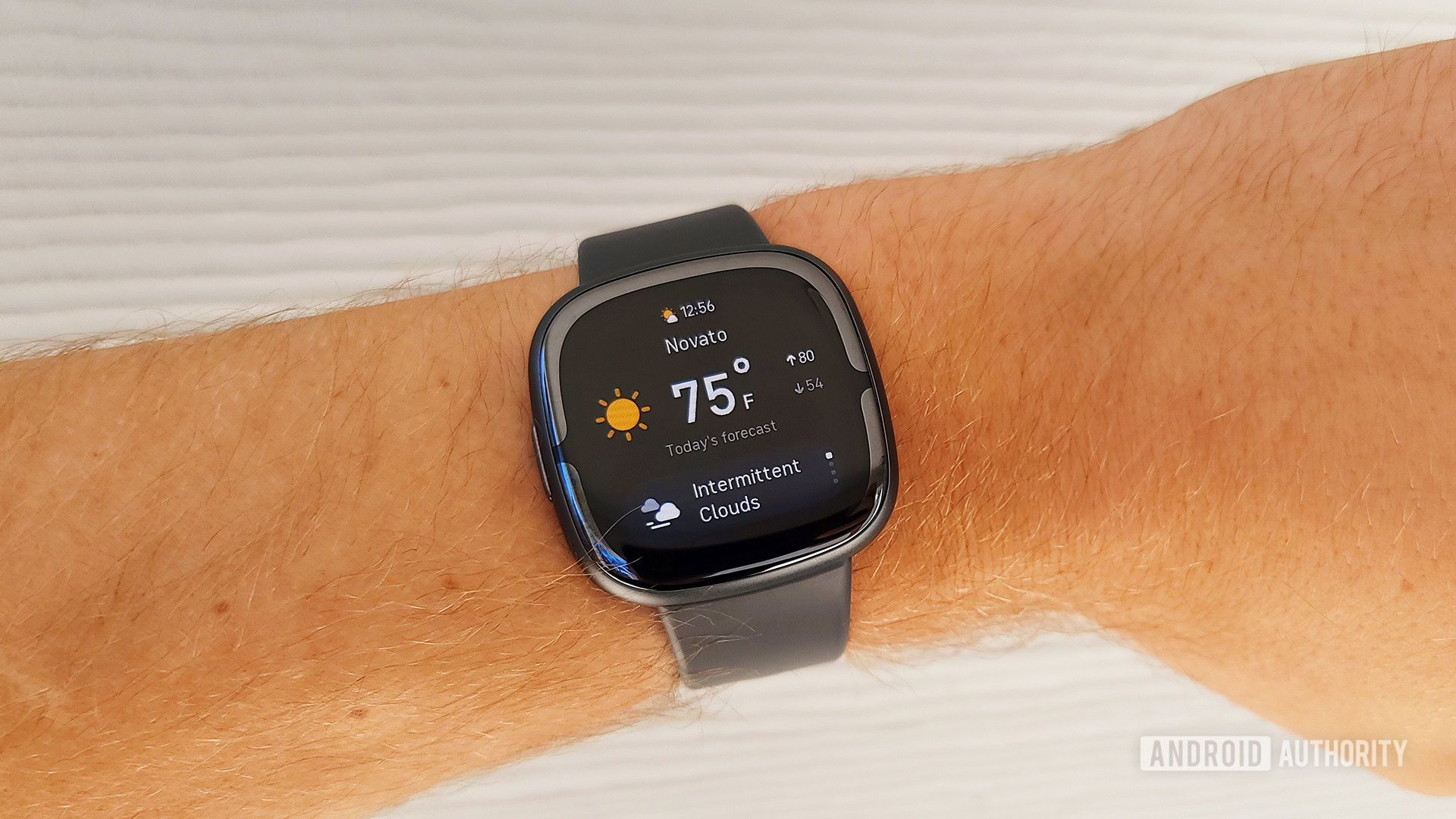
The screen seems to be a common trouble point on Fitbit smartwatches and trackers. Several reports online flag vertical lines, washed out or completely black displays, and flickering screens. If you have one of these problems, you might find a solution below.
Potential solutions
- Several users online have highlighted an issue where colored lines run vertically across their device’s display. Unfortunately, there seems to be no surefire fix for this problem, as it’s likely a hardware fault. If your smartwatch or tracker has this issue, contact Fitbit immediately.
- Newer devices, including the Charge 3, seemingly suffer from a screen issue whereby pixels gradually turn white. Again, this seems to be a hardware issue. Contact Fitbit if you find that your device has this problem.
- Several reports on Fitbit’s forums highlight an issue with some Versa devices suffering from a white/green screen. The screen may also flicker.
- Fitbit suggests restarting the device.
- Fitbit also recommends switching the clock face to one developed by Fitbit if this doesn’t work.
- If these two solutions fail, we recommend contacting Fitbit. It could be a hardware fault.
- If your Fitbit screen is far too bright in certain situations, here is a guide on adjusting your device’s brightness.
- If your Fitbit’s screen grows dimmer, you may need a replacement. We’ve seen plenty of users complaining about being unable to see text on their Fitbit Charge 4 and Alta models. There is no reliable fix for this.
- As a last resort, try restarting your device.
- Alternatively, check if Do Not Disturb is activated and switch it on and off.
- Are you unable to scroll across on your Fitbit’s screen?
- There’s no known fix for this issue yet, but we suggest a hard restart. If this doesn’t work, a reset might be in order.
Other solutions
- Is your Fitbit device stuck on the Fitbit logo? Unfortunately, there’s no clear solution for this particular problem.
- If you can, try restarting your device. You can find more details on how to do this for your particular Fitbit at the foot of this article.
- If this step doesn’t fix your issue, we’d recommend contacting Fitbit.
- If your Fitbit screen refuses to turn on but vibrates, try resetting your Fitbit. Details of performing a reset can be found at the bottom of this guide.
- Your screen may display a cross with a red circle around it.
- If factory resetting your device doesn’t solve the issue, contact Fitbit. Your device likely has a software or hardware issue.
Notification issues
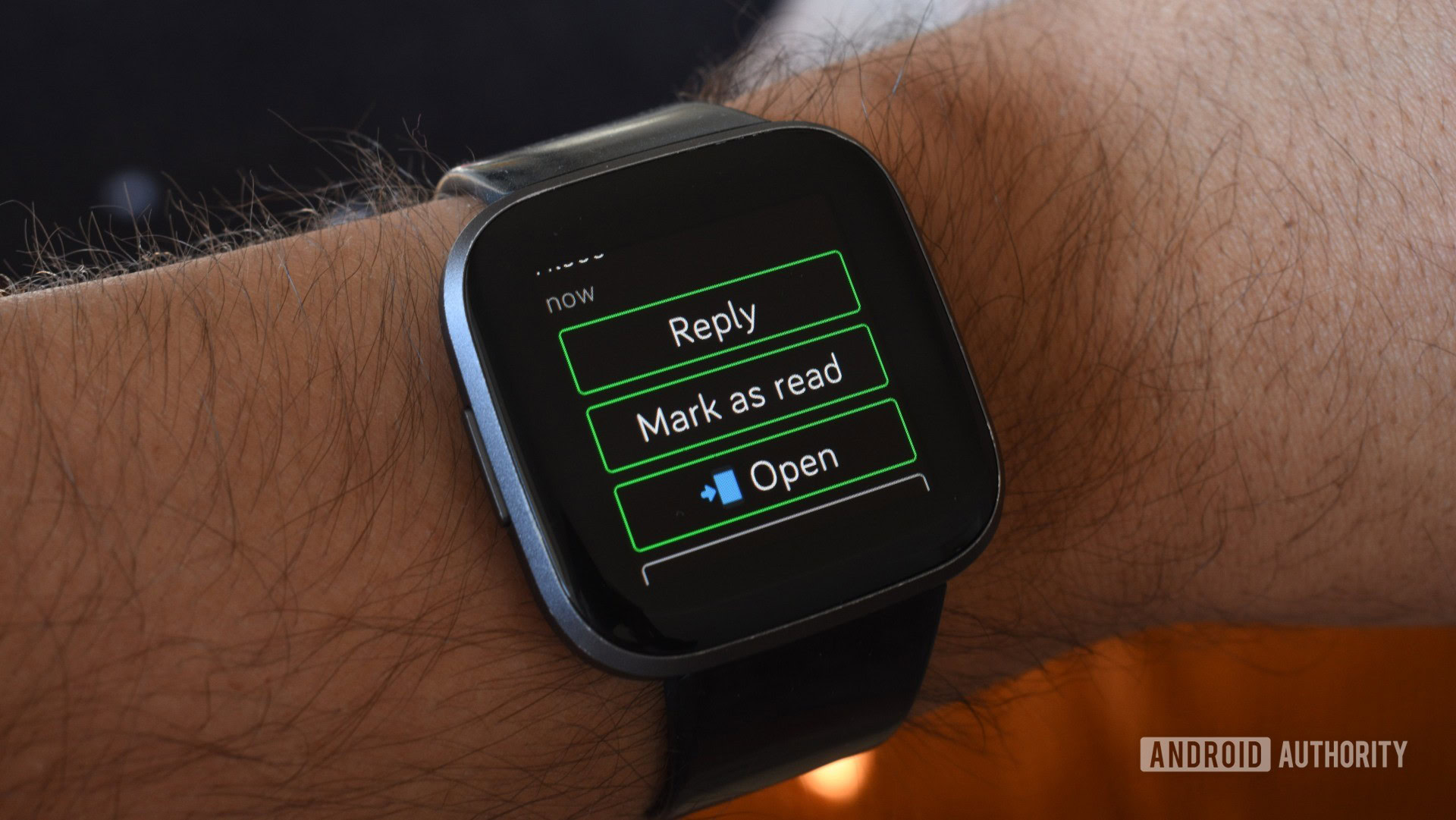
Some users struggle to receive notifications on their Fitbit from their smartphones. If this happens, you may need to restart your fitness tracker or change your phone’s Bluetooth settings.
Potential solutions
- First, make sure you have notifications enabled in the Fitbit app. Open the app on your smartphone, tap the Today tab, and then the devices icon. Select your device, then tap Notifications.
- Make sure you’re within 20 feet of your mobile device. Fitbit trackers connect to smartphones via Bluetooth, so you’ll need to ensure you’re in range to stay connected. If your tracker and mobile device are too far away from one another, you won’t receive notifications, or they may be delayed.
- Make sure you don’t have another Bluetooth device connected to your smartphone. This may cause interference that prevents notifications from appearing on your Fitbit tracker.
- Make sure Do Not Disturb mode is turned off on your Fitbit device.
- Fitbit Sense 2 and Versa 4: From your watch face, swipe down to access the quick settings shade. Tap the Do No Disturb icon to switch it on or off.
- Fitbit Luxe and Inspire 3: From your watch face, swipe down. Make sure the Do Not Disturb setting is turned off.
- Fitbit Sense and Versa 3: From your watch face, swipe from left to right. Make sure the Do Not Disturb icon is unchecked.
- Fitbit Inspire 2, Inspire, and Inspire HR: Navigate to your device settings, then scroll down to the Do Not Disturb option. Tap it, then ensure Do Not Disturb is turned off.
- Fitbit Charge 4 and Charge 3: Touch and hold the side button for a few seconds, and a Do Not Disturb option will appear. Make sure this setting is turned off.
- Fitbit Versa 2, Versa, Versa Lite, and Ionic: From your watch face, swipe down to access your notifications, then again from the top of the screen. You should see three icons show up near the top: music, wallet, and quick settings. Tap the grey quick settings icon on the right. Make sure the Do Not Disturb icon is unchecked.
- Fitbit Ace, Ace 2, and Ace 3: You can disable notifications from the Fitbit app on your smartphone. Open the app on your smartphone, tap your profile icon, then tap your device. Scroll down and select Notifications. From there, you can turn on/off notifications for your device.
- Fitbit Charge 2: Hold the side button while on the watch face. Do Not Disturb mode should toggle on/off.
- Fitbit Surge: Swipe over to Settings and make sure Notifications is set to On.
- Fitbit Blaze: Hold the top-right button for a few seconds and make sure Notifications is set to On.
- Make sure Do Not Disturb mode is turned off on your phone.
- You may need to force quit the Fitbit app. From your mobile device, head to Settings > Apps > See all apps > Fitbit > Force Stop.
- Try turning Bluetooth off and on again. From your mobile device, head to Settings > Bluetooth, then turn the Bluetooth toggle off then on. You can also turn off the Bluetooth toggle by tapping the icon in your quick settings panel.
- Try restarting your mobile device.
- If all else fails, try uninstalling and reinstalling the Fitbit app.
Charging issues
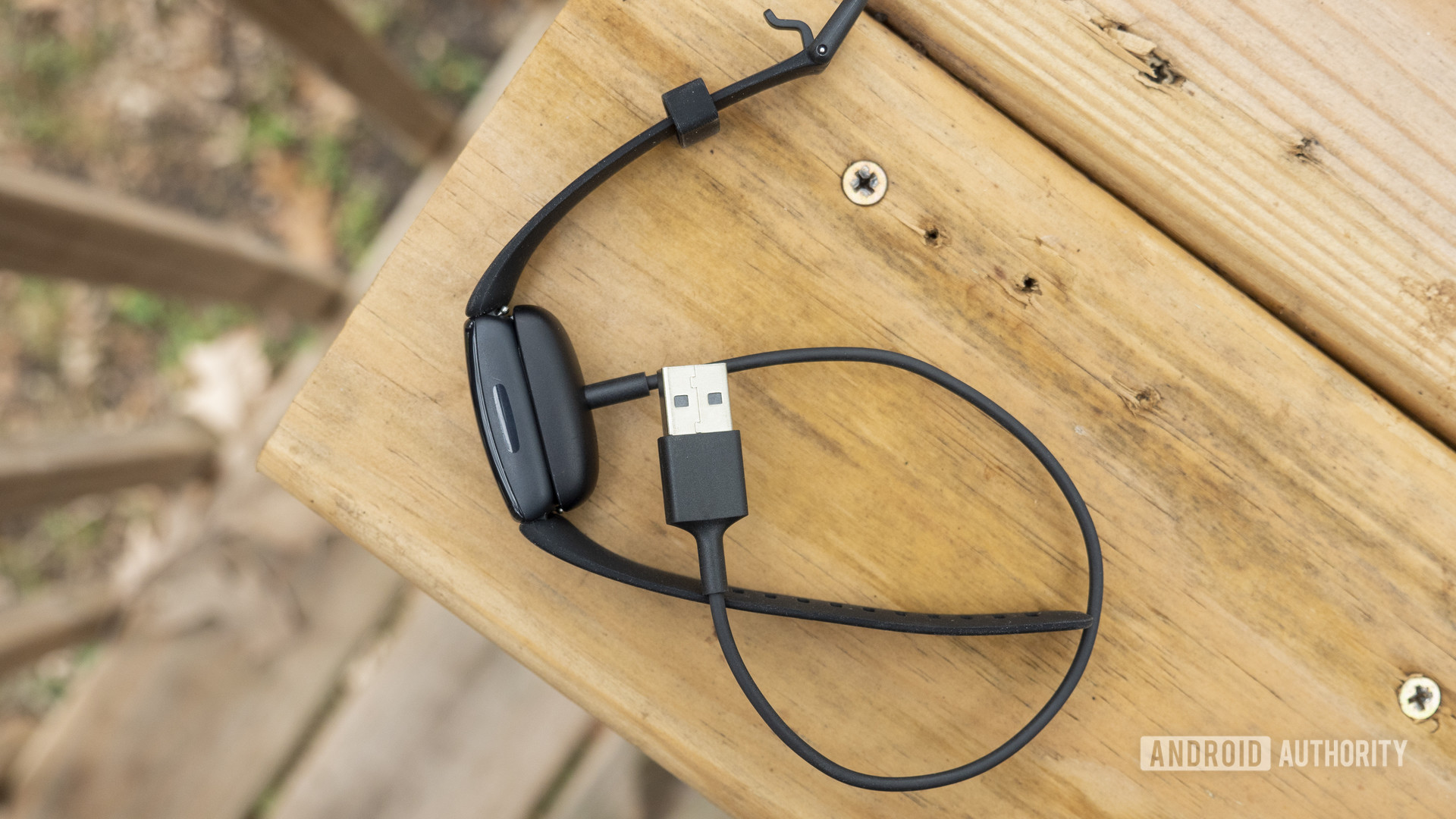
Fitbit not charging? Nobody likes to wake up in the morning to a dead Fitbit. You may need to switch charging cables or clean your device.
Potential solutions
- Make sure your Fitbit tracker and charging cable are clean. Dust and debris can accumulate over time, which could prevent the device from charging properly. Here’s a guide on how to clean your tracker.
- Try plugging your Fitbit charger into a different USB port. A UL-certified wall charger and a simple USB input on a computer will work. Your Fitbit may not charge properly if you’re using a USB hub.
- Ensure your Fitbit device’s pins are properly lined up on the charging cable. If the charging pins on your Fitbit device aren’t perfectly lined up on your charger, your device won’t charge properly. We’ve found this to be particularly common when charging the Alta and Fitbit Charge devices.
- You might need to restart your Fitbit device. A walkthrough can be found below for instructions on how to do so.
- If you notice your Fitbit’s charger is a little beat up, you might need to replace it. You can buy a new charger from Google Store or on Amazon.
Other solutions
- Some Fitbit users, especially those who own Sense and newer Versa models, have highlighted issues with their charging cradle’s pins. Either these don’t make good contact with their companion device, or the pins sink into the charging cradle itself. There’s no clear resolution for this problem, but you might be able to try a few things.
- Try agitating the pins using a bristle brush and some rubbing alcohol. Ensure the charger is unplugged when you do this.
- If the charging pins are sunken into the charger’s cradle, try turning the cradle upside down and slamming it into your palm. This action might just spring the pins free.
- If the possible solutions above don’t resolve these issues, you might have to purchase a new charger.
- If your Fitbit refuses to charge beyond a certain percentage, try factory resetting the device.
- Alternatively, run it until its battery is completely dead, charge it completely, and switch it on.
Quick View and tap recognition issues
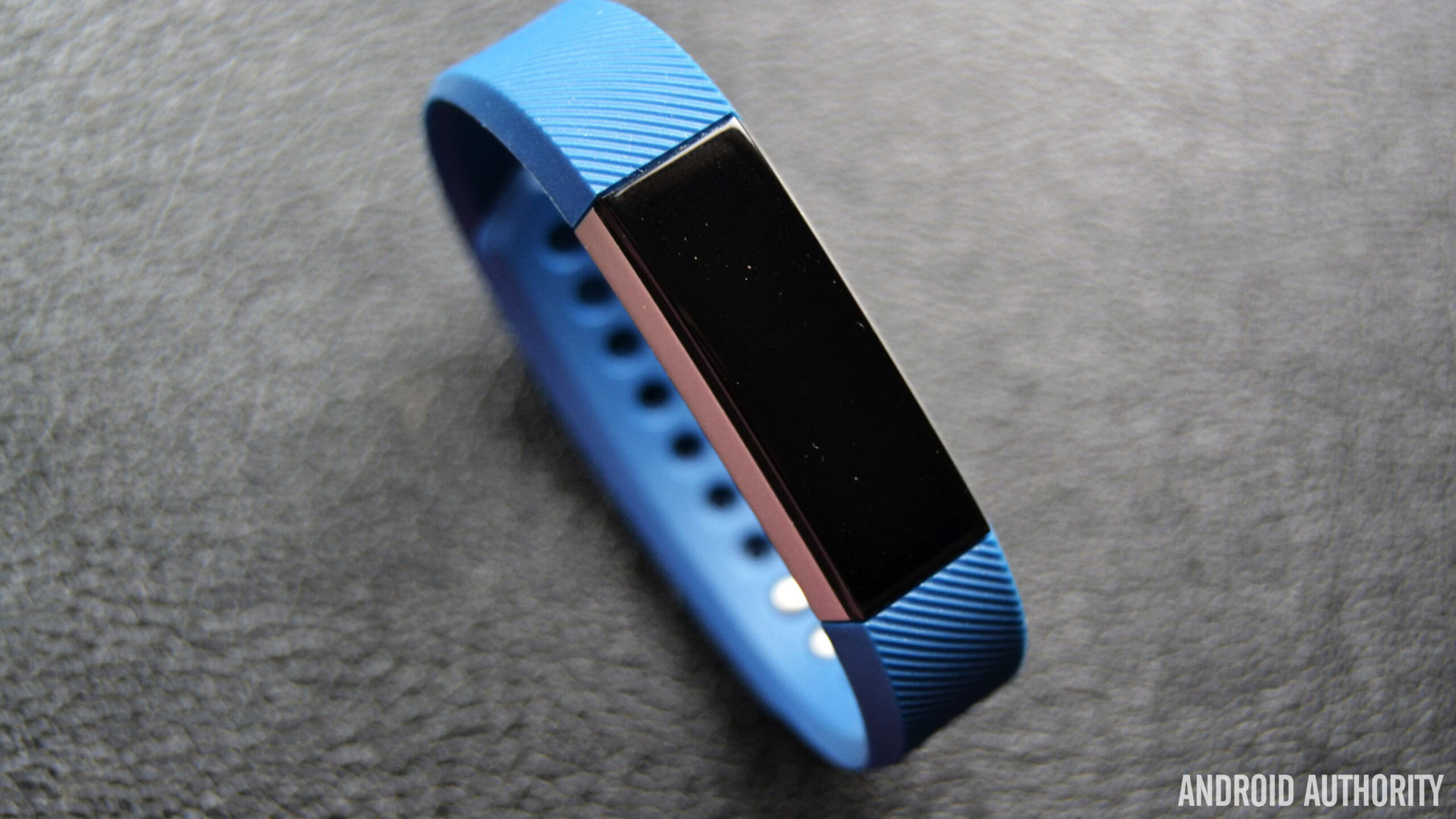
Many Fitbit devices come with a Quick View feature, which allows you to raise your wrist to wake the display. Some of these devices — like the Alta, Charge 2, and Charge HR — also have tap-enabled displays, meaning you can’t swipe through menus like on a normal touchscreen device. Instead, it only takes a simple tap near or on display to swipe through your daily stats.
Unfortunately, many Fitbit users claim to have problems with Quick View and tap recognition being too slow to respond. If you’re in this boat, the answer may lie in your Fitbit app’s Settings menu.
Potential solutions for Quick View problems
- For Quick View to work properly, your Fitbit device must know which wrist it’s being worn on and whether you’re right-handed or left-handed. To check if this is the problem, open the Fitbit app, select your profile photo and tracker, then ensure the Quick View toggle is turned on.
- You’ll see options to change your wrist placement on that same screen. Ensure you’re wearing your Fitbit on the correct wrist and that you’ve chosen whether or not you’re right or left-handed. This will greatly affect whether or not Quick View works properly.
Potential solutions for tap recognition problems
- Make sure you’re tapping your Fitbit device in the right spot. Fitbit recommends aiming toward the bottom of the display, where the tracker meets the band. Also, make sure you’re not tapping too forcefully or too softly.
- If there’s a second-or-two delay from the time you tap your device, that’s normal. Just make sure you’re giving your device time to react. If you’re struggling with tap recognition, try slowing down your taps.
Update issues
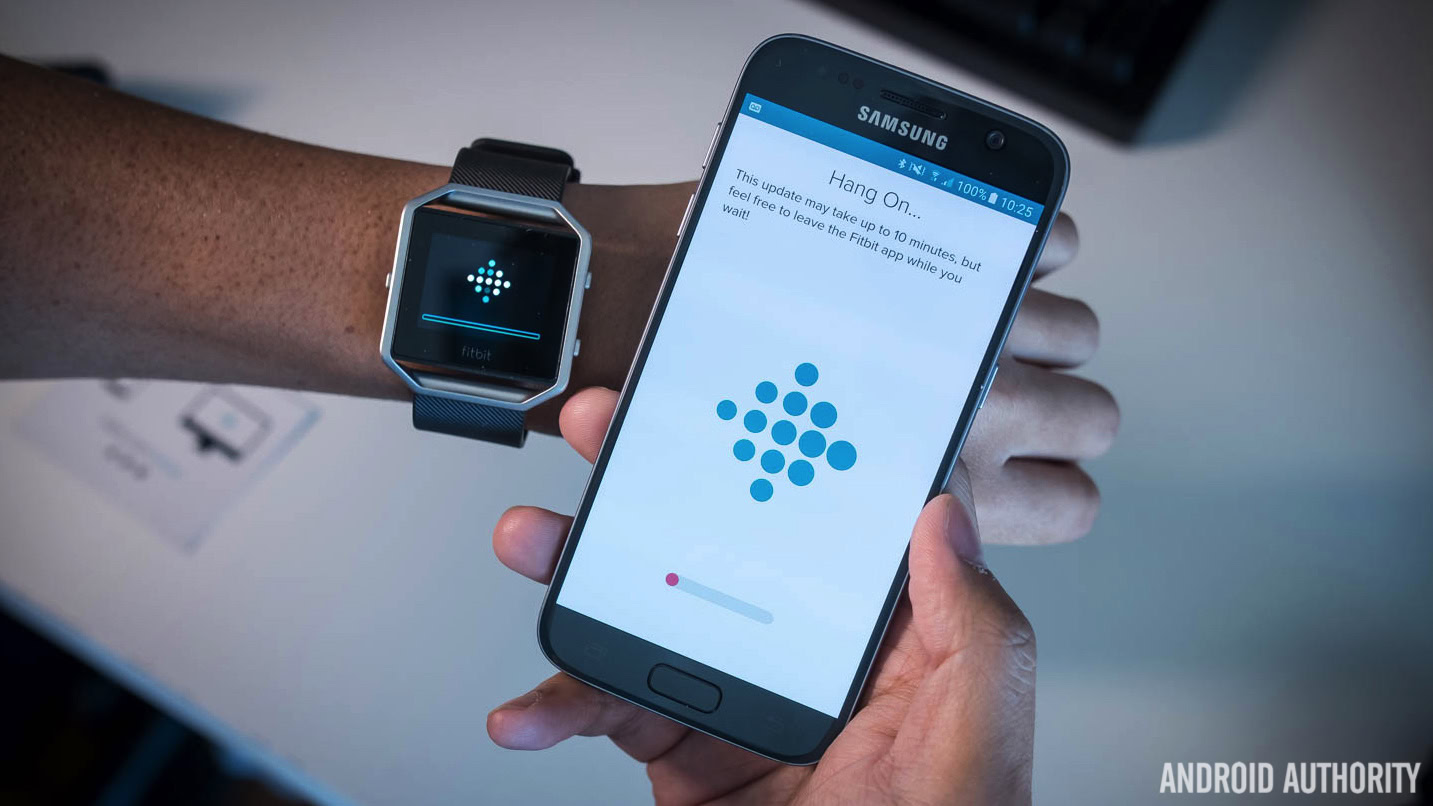
Some people have problems updating their Fitbit device’s firmware. If this happens to you, you may need to restart your tracker or try syncing with another mobile device or computer.
Potential solutions
- Try restarting your Fitbit device.
- After that, try updating your device again. If it’s still not working, try restarting your mobile device.
- If you’re trying to sync your Fitbit with your mobile device, try removing the Bluetooth connection from your mobile device.
- To do this, navigate to Bluetooth in your mobile device’s settings menu, find your Fitbit device, then choose Forget.
- If you still can’t update, try resetting your device. You will need to re-add it later.
Charge 5 update issues
In July 2023, Fitbit rolled out an update (version 194.61) for the Charge 5. The update caused issues for several users, reportedly bricking several users’ devices. Fitbit responded, noting that it was aware of the issue and was investigating the cause.
In January 2024, it pushed through a new update, version 194.91, to the Charge 5. While some users note that the update largely fixed several problems, many others have reported battery-draining issues, missing sleep information on the device, and unresponsive devices. It’s unclear what’s causing the latest round of issues, but if possible, we’d suggest holding off installing the July 2023 and January 2024 updates for now.
Other issues
- Several Fitbit Inspire 2 users have reported issues seemingly after installing update 1.124.76. From blank displays, missing icons, and sync issues seem commonplace.
- This is currently the latest software version available for the device. Fitbit also deems it “critical,” so consider updating regardless of potential issues.
- If you have updated your band and are experiencing issues, consider factory resetting your device.
- Some Fitbit Charge 5 owners have noted a recent uptick in device battery drain. The issue is seemingly related to software version 1.171.50 issued in July 2022.
- You should install the latest software version to fix the issue. As of June 2023, version 1.194.61 is available.
- If you’re still experiencing issues, we recommend contacting Fitbit support.
- It seems the Charge 4 isn’t exempt from battery drain issues after update 1.100.76. Plenty of users on Fitbit’s forums are reporting similar issues.
- If you’re struggling with similar issues after installing this update, consider hard restarting your band. Find steps on how to do this in the section at the foot of this article.
- This is currently the latest software version available for the Charge 4.
Alarm issues
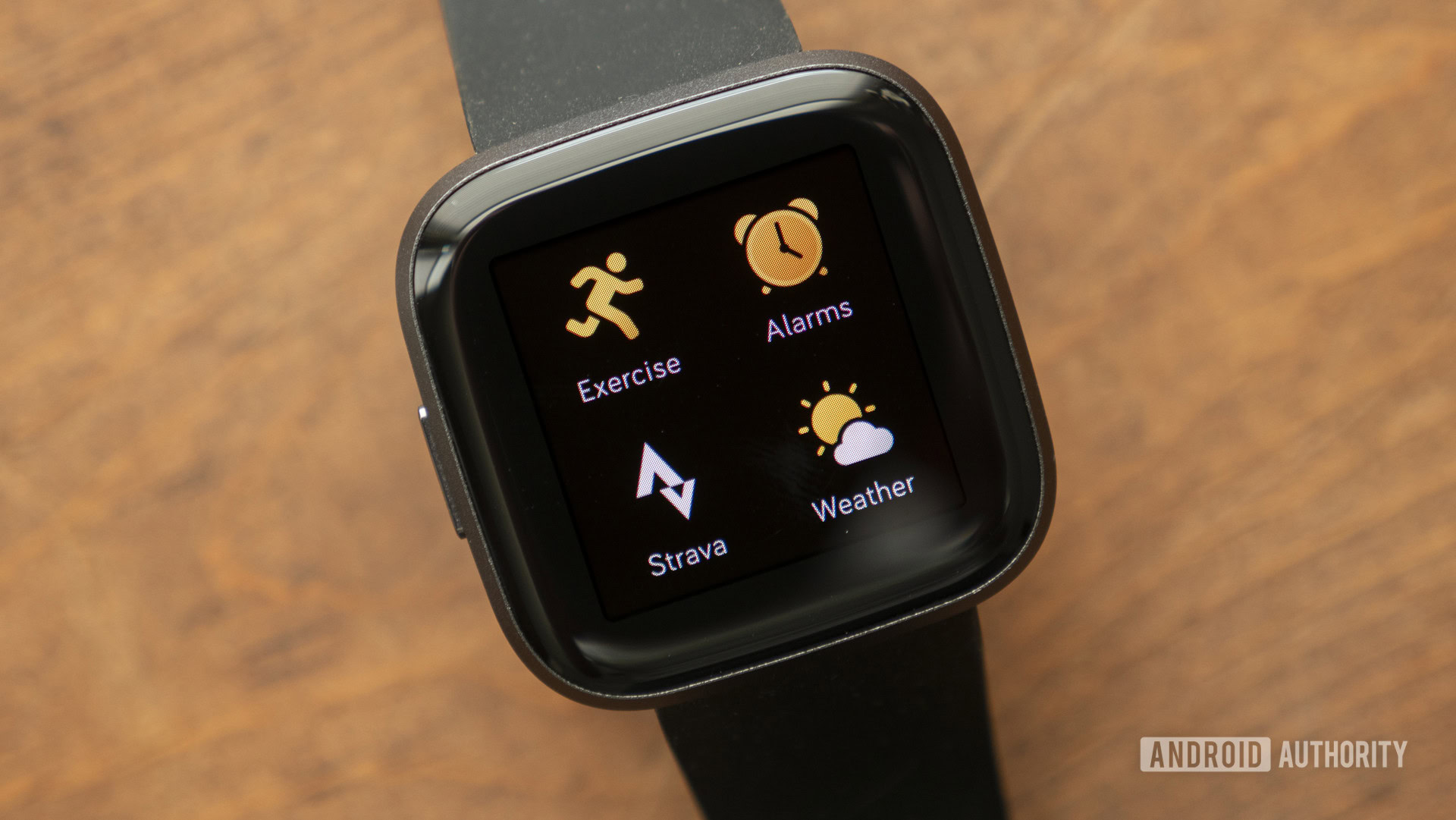
Most Fitbit devices have the ability to wake you up in the morning via silent alarms. If your silent alarms aren’t working, there aren’t a ton of options. You’ll need to check your Fitbit’s vibration motor using the steps below. If that doesn’t work, Fitbit recommends you contact customer support.
Potential solutions
- First, make sure you have a silent alarm set on your Fitbit device. To do this, open the Fitbit app, choose your account photo, select your Fitbit device, then choose Silent Alarm.
If that wasn’t the problem, here’s how to test your Fitbit’s vibration motor:
- Fitbit Luxe: Simply plug the Luxe into its charging cable. You should feel a vibration.
- Fitbit Sense/Sense 2: Swipe over on the screen and select Timer on the Sense. Tap Stopwatch and then tap the Play icon. The watch should vibrate. Connecting the device to the charging cable and plugging it in should make the watch vibrate too.
- Fitbit Versa 3/Versa 4: The steps are similar on the Versa 3. Swipe over and select Timer, tap Stopwatch, and then tap the Play icon. Plugging in the tracker to charge should work as well.
- Fitbit Inspire 3, Inspire 2, Inspire, and Inspire HR: Plug the Inspire into its charging cable. You should feel a vibration.
- Fitbit Charge 5/Charge 6: On your Charge 5, swipe over and select the Timer option. Tap Stopwatch, then tap the Play icon. Your tracker should vibrate.
- Fitbit Charge 4: Simply press the side button on your Charge 4 while it’s turned on. Your tracker should vibrate.
- Fitbit Versa 2: On your Versa 2, swipe over and select the Timer option. Tap Stopwatch, then tap the Play icon. Your tracker should vibrate.
- Fitbit Versa Lite: On your Versa Lite, swipe over and select the Timer option. Tap Stopwatch, then tap the Play icon. Your tracker should vibrate.
- Fitbit Charge 3: Simply press the side button on your Charge 3 while it’s turned on. Your tracker should vibrate.
- Fitbit Versa: On your Versa, swipe over and select the Timer option. Tap Stopwatch, then tap the Play icon. Your tracker should vibrate.
- Fitbit Ionic: From the main clock face, press and hold the button on the left side. Your tracker should vibrate twice.
- Alternatively, you can swipe over to the Timer screen, tap it, then tap the play icon. Your tracker should vibrate.
- Fitbit Ace 2 and Ace 3: Plug your Ace 2 or Ace 3 into its charging cable. You should feel a vibration.
- Fitbit Ace: Clip your Ace to the charging cable, and make sure the cable is plugged into a USB port on your computer. Press the button on the charging cable to check vibration.
- Fitbit Blaze: Swipe over to the Timer screen, then tap it. Tap Stopwatch, then tap the play icon. Your tracker should vibrate.
- Fitbit Alta: Clip your Alta to the charging cable, and make sure the cable is plugged into a USB port on your computer. Press the button on the charging cable to check vibration.
- Fitbit Alta HR: Clip your Alta HR to the charging cable, and make sure the cable is plugged into a USB port on your computer. Press the button on the charging cable to check vibration.
- Fitbit Charge 2: Clip your Charge 2 to the charging cable, and make sure the cable is plugged into a USB port on your computer. Your tracker should vibrate when you connect the cable.
- Fitbit Charge and Charge HR: Press and hold the side button on your tracker to enter exercise mode. Your tracker should vibrate.
- Fitbit Flex 2: Plug your charging cable into the USB port on your computer, then remove the tracker from the wristband. Press the tracker into the charging cable. Your tracker should vibrate.
- Fitbit Flex: Tap below the row of lights on your Flex device. You should feel your tracker vibrate and enter sleep mode.
- Fitbit Surge: Plug your Surge into the charging cable, and make sure the cable is plugged into a USB port on your computer. Your tracker should vibrate.
- Fitbit One: Clip your One into the charging cable, and make sure the cable is plugged into a USB port on your computer. Your tracker should vibrate.
Band issues
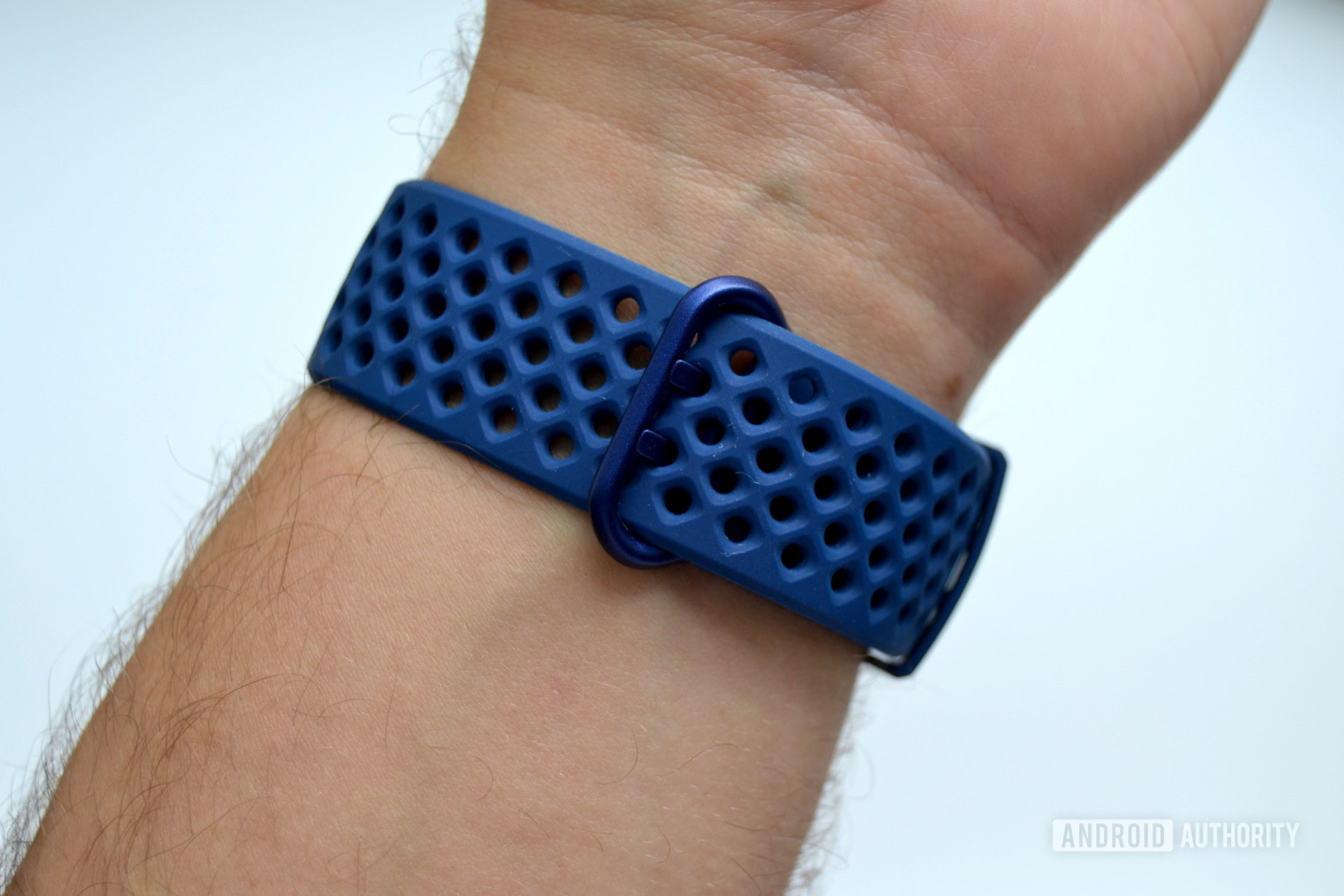
Band breakage issues
Fitbit devices are well made, but they’re not invincible. If your new Fitbit band starts to break, use the company’s warranty policy.
It’s worth noting that if you own a recent Fitbit device and are out of warranty, you can buy a new band without replacing the whole unit. If you have an older tracker like the Charge HR, Surge, or Flex, you’ll want to follow the steps below to get it replaced.
- As noted on Fitbit’s Returns and Warranty page, you can return your Fitbit device for a full refund within 45 days of your purchase date, provided you ordered the device from the Google Store.
- In addition, products ordered in November and December may be returned through January 31 of the following year or 45 days (whichever is longer).
- Fitbit also offers a one-year limited warranty to the original purchaser of the product, guaranteeing that the Fitbit product is free from defects in materials and workmanship under normal use. This means Fitbit will fix the damages done to your Fitbit device within the first year, provided you’re the original purchaser of the device. If you’re not, unfortunately, you may be out of luck.
Looking for replacement bands for your device? You can, of course, visit the Google Store to buy a replacement or head to the Amazon links below for a cheaper alternative:
- Fitbit Charge 6 replacement bands
- Fitbit Sense 2 replacement bands
- Fitbit Versa 4 replacement bands
- Fitbit Inspire 3 replacement bands
- Fitbit Charge 5 replacement bands
- Fitbit Luxe replacement bands
- Fitbit Sense replacement bands
- Fitbit Versa 3 replacement bands
- Fitbit Inspire, Inspire 2, and Inspire HR replacement bands
- Fitbit Charge 4 replacement bands
- Fitbit Versa 2 replacement bands
- Fitbit Versa Lite replacement bands
- Fitbit Charge 3 replacement bands
- Fitbit Versa replacement bands
- Fitbit Ionic replacement bands
- Fitbit Ace 3 replacement bands
- Fitbit Ace 2 replacement bands
- Fitbit Ace replacement bands
- Fitbit Alta HR replacement bands
- Fitbit Charge 2 replacement bands
- Fitbit Flex 2 replacement bands
- Fitbit Alta replacement bands
- Fitbit Blaze replacement bands
Band rash issues
Several Fitbit users online have complained about painful skin irritation on their wrists while wearing their devices. It might be one of the more widespread issues we’ve seen first cropping up in 2015. It’s still prevalent today.
Fitbit notes that “prolonged contact” might lead to irritation issues, suggesting that users keep the tracker clean and dry, fasten it snug but not too tightly, and remove it “for an hour after extended wear.”
- If you must wear your Fitbit, regularly transfer it between your dominant and non-dominant wrists.
- Consider purchasing a new band made of a different material if you find the stock Fitbit band irritates your skin.
- We recommend a softer fabric that allows for more skin ventilation, like elastic, nylon, metal mesh, or leather.
- If you frequent the gym or running trail, using one band for workouts and another for daily wear is also worth trying. Switch to your workout band before activity, and switch back to a more comfortable band post-workout. Be sure to clean your workout band regularly, too.
- Contact a dermatologist if you’re still getting a rash.
ECG issues
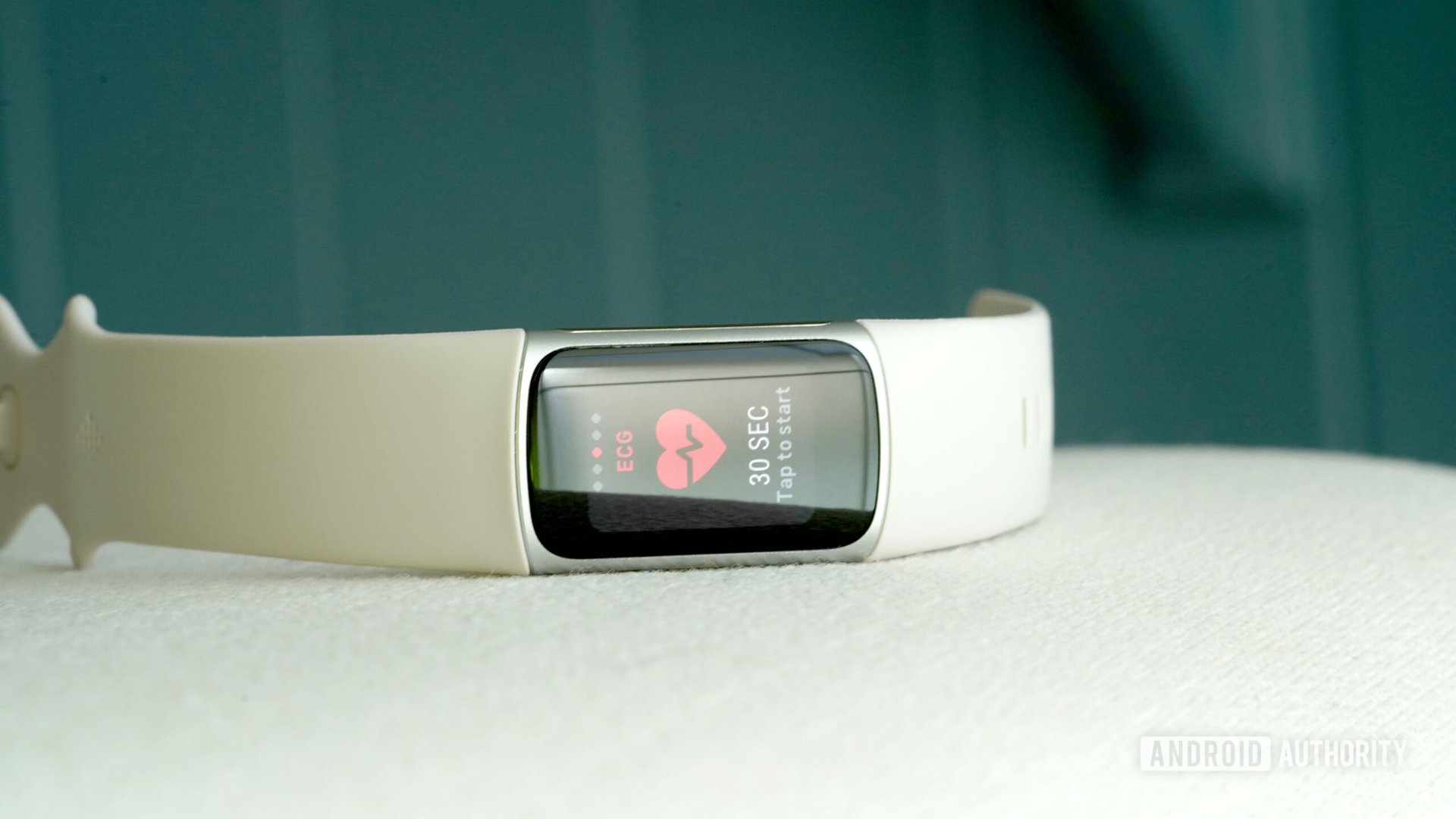
Are you having Fitbit Sense ECG problems? You’re not alone. A few users seem to be experiencing bugs affecting the Fitbit Sense’s electrocardiogram (ECG) recordings.
Users on the Fitbit forums said Fitbit has contacted them and suggested they return their Fitbit Sense smartwatches to the company. Fitbit told these users that it would replace their smartwatches free of charge. The problem at hand is an unspecified “hardware issue.” Fitbit UK confirmed (via The Verge) that the ECG app on some Fitbit Sense models incorrectly displays results as “inconclusive.”
Potential solutions:
- There doesn’t appear to be a simple fix or software update that will squash this ECG bug. Contact customer support for a replacement smartwatch if you’re experiencing Fitbit Sense ECG issues.
- Additionally, ECG features may not be available in your country. You can find a list of supported countries here.
Battery issues
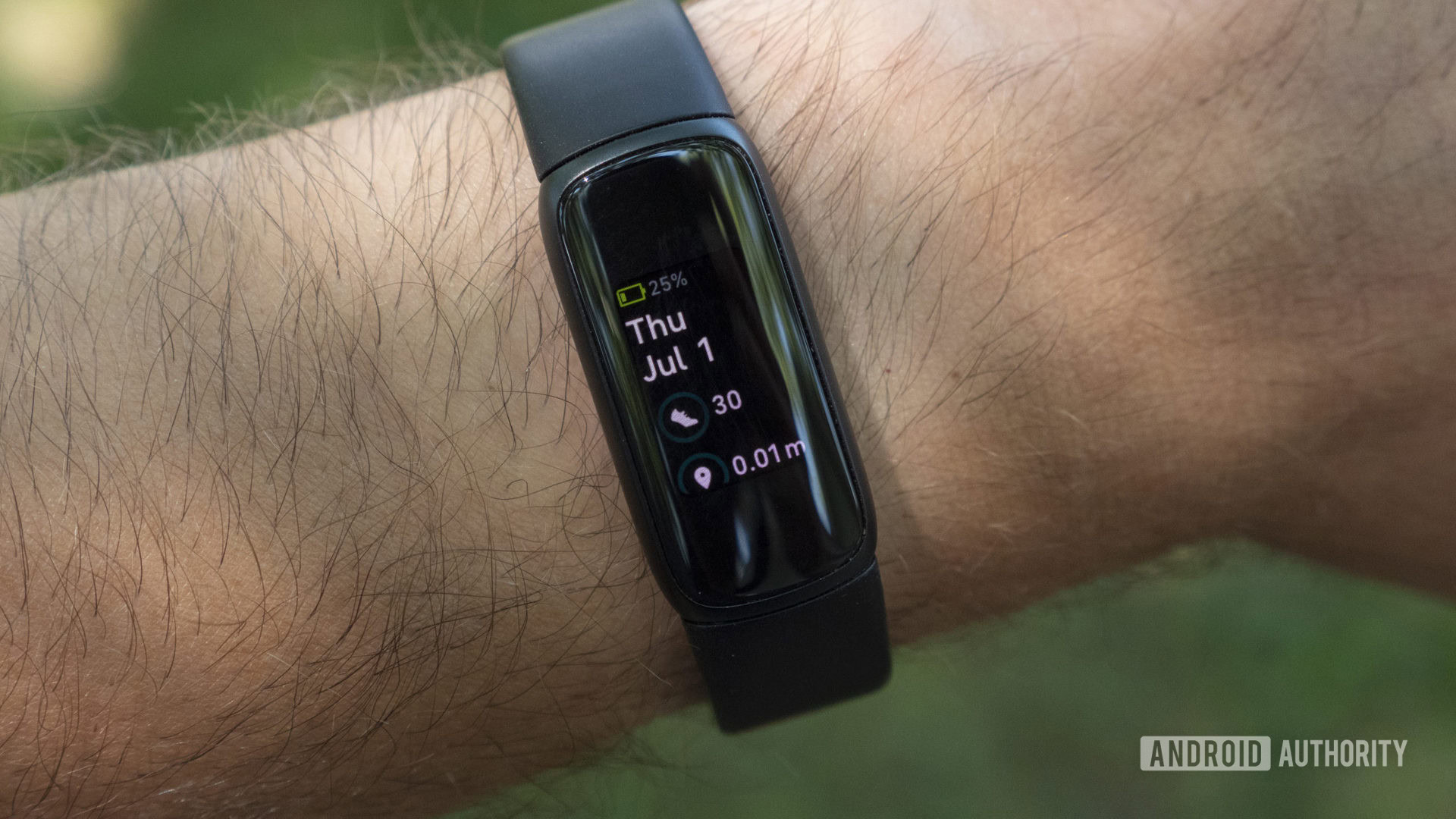
Fitbit devices usually excel against the competition regarding battery endurance but can suffer from draining problems. There are several ways to maximize your device’s battery life. Below are a few tips.
Potential solutions:
- Switch off always-on display: If your tracker supports AOD, ensure it’s disabled to maximize battery life.
- Fitbit Sense, Sense 2, Versa 4, and Versa 3: Swipe right from the clock face to access the quick settings page. Tap on the always-on display icon to toggle AOD off or on.
- Fitbit Versa 2: Swipe right, open Settings > tap Always-On Display to toggle it off or on.
- Fitbit Charge 5 and Luxe: Swipe down, open Settings > Display settings > Always-on display.
- Set your Fitbit’s screen brightness to Dim. You can usually find this option within the Settings menu.
- Make sure GPS tracking is off when you’re not using it. Some Charge 5 users have noted that switching off the built-in GPS after activity tracking improves battery life.
- To do this, open the Settings app > GPS > toggle on Phone. This will deactivate your Charge 5’s GPS and use your phone instead. This could save a little battery if your phone is on your person.
- Reduce your Fitbit’s screen timeout. You can find these toggles within the Settings app on your Fitbit device.
- Do you own a Fitbit Sense and use Snore Detect? Consider switching this feature off if not explicitly required. The feature is known to drain the Sense’s battery during sleep.
- If your Fitbit can’t hold a charge at all, contact Fitbit support. It could be a more serious hardware issue.
Button issues
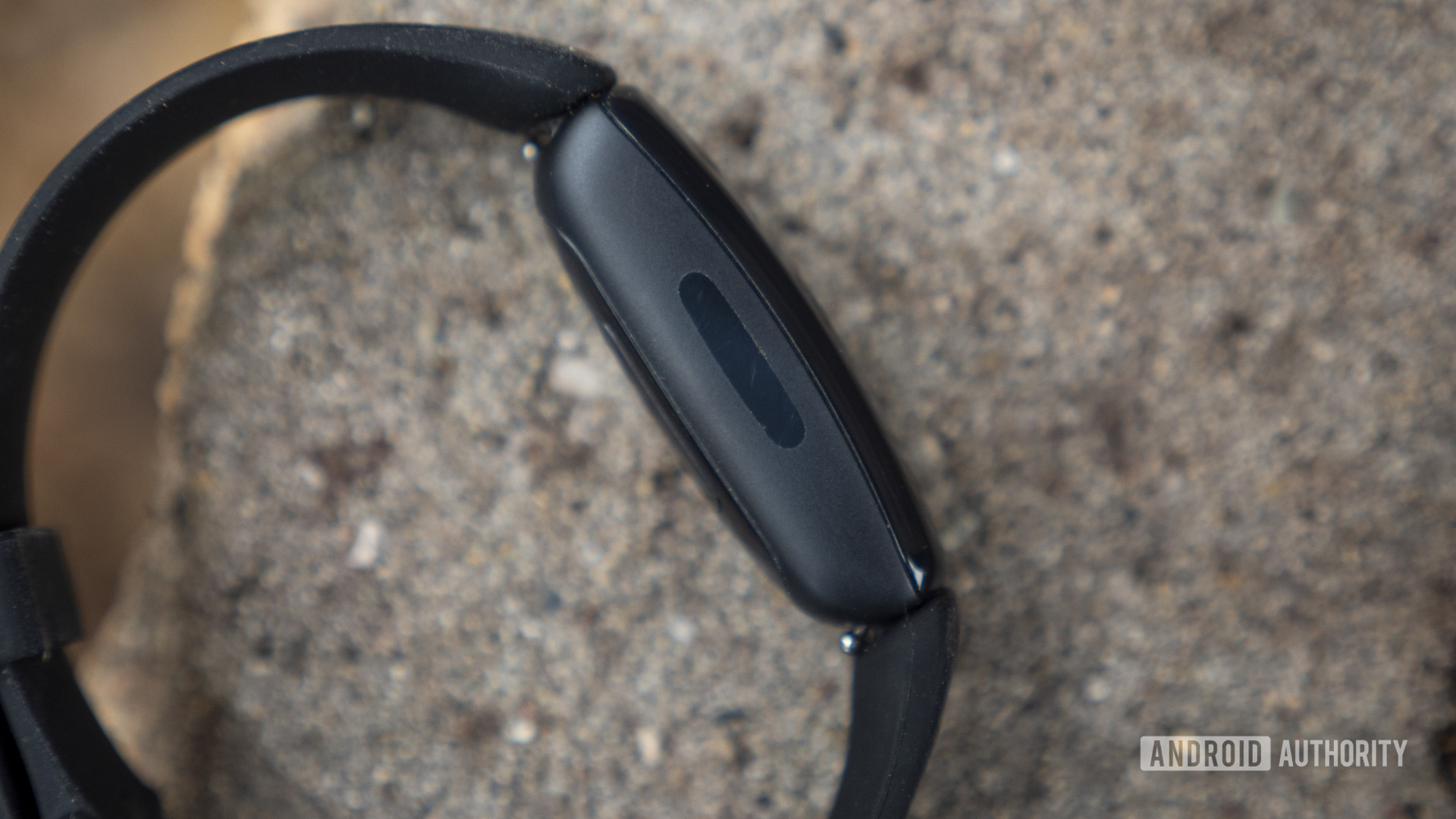
Fitbit uses both physical pushers and touch-sensitive buttons on its devices. Sometimes, these buttons may become unresponsive or stuck. Here are a few remedies to common issues.
Fitbit Inspire 2
If you find that your Fitbit Inspire 2’s side buttons are unresponsive, you could try the following:
- Check if Water Lock is enabled. This mode is easily enabled by accident, and it will disable both side buttons. Double-tap the screen slowly and firmly to disable Water Lock on the Inspire 2.
- Have you tried restarting your Inspire 2? Place the tracker on its charging cradle and hold down the side buttons for five seconds. If it restarts, your problem should be fixed. However, if it doesn’t, see the alternative solution below.
- If your tracker is not in Water Lock mode, you’re stuck in a menu unable to exit, or you can’t restart your device, you may have to bite the bullet and wait until the tracker’s battery runs out. Once the device’s battery is completely dead, place it on its charger. Running down the battery is the only alternative to restarting the Inspire 2 in this scenario.
- If the above steps don’t remedy the problem, contact Fitbit. It may be a more serious hardware issue.
Trackers and watches with physical buttons
Fitbit trackers and smartwatches with physical buttons face a fair share of issues.
- Is your device’s button stuck? Try cleaning it with a brush, cotton bud, and rubbing alcohol. Grit or grime may obstruct the button.
Fitbit Sense and Versa 3
We do not like the Sense and Versa 3’s inductive channel. However, if it isn’t quite working as expected, it’s usually a question of getting used to it more than an actual issue. You may need to find the exact location to push on your particular tracker or adjust the pressure accordingly.
Health tracking issues
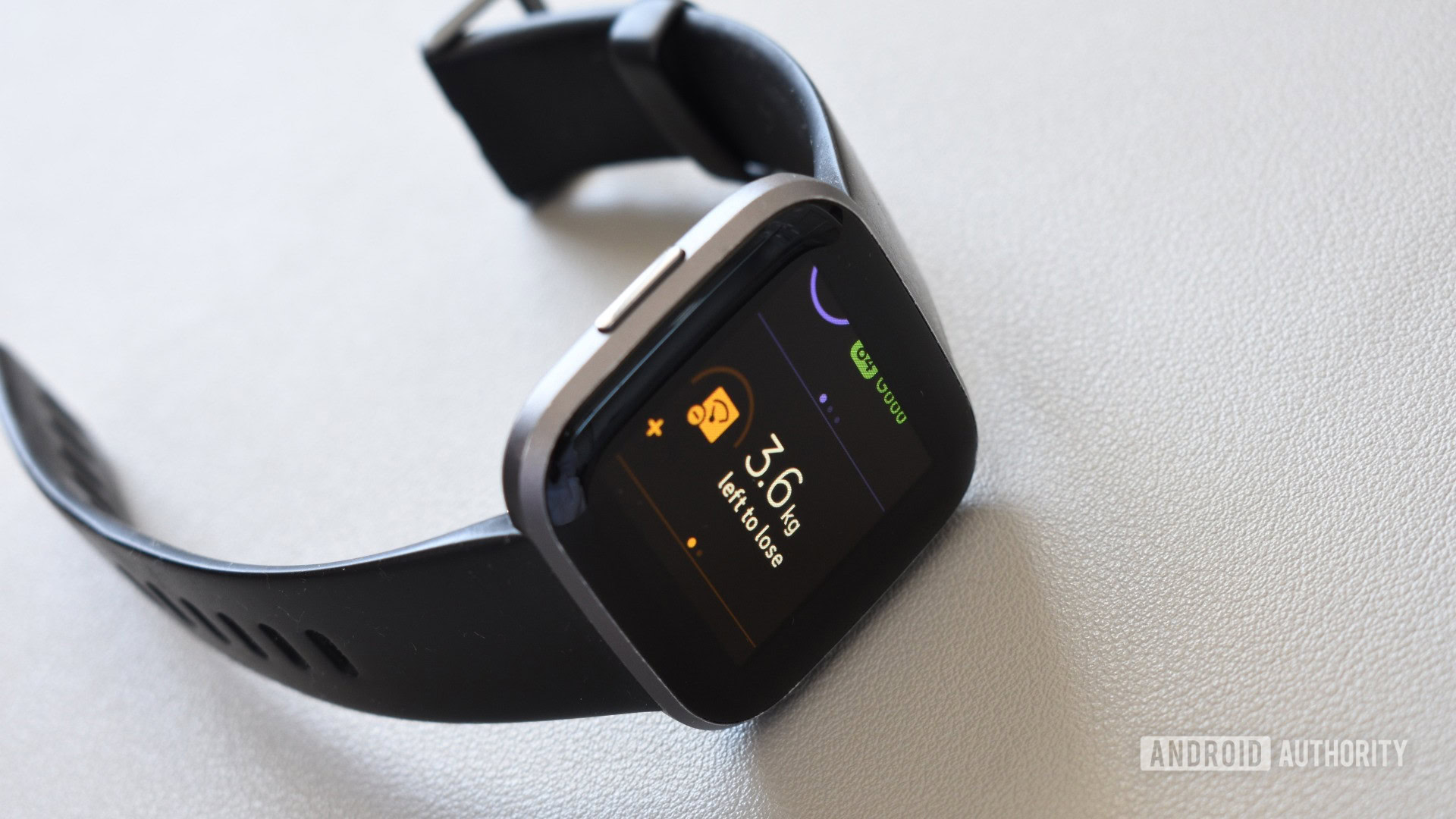
If you’ve owned a Fitbit, chances are you’re faced with some type of health tracking issue. Whether your data is slightly off or it refuses to sync to the app, here’s how to mitigate some of the more prevalent problems.
Potential solutions:
- A more recent issue Fitbit users have noticed is wonky calorie counting data. Either the app overcalculates calories taken in through food, or the app widget figure lags behind what you’d expect.
- They can usually be fixed by logging out of the Fitbit app on your phone, then logging in once again.
- If this doesn’t work, consider updating your Fitbit app to version 3.63 or newer.
- Some Fitbit users have reported massive changes to their estimated oxygen variation values and graph while sleeping in recent months. The issue affects several devices, including the Charge 4, Versa 2, and Versa 3.
- Ensure that you install Fitbit app version 3.65 or newer on your device. This version brings improvements to the estimated oxygen levels graph.
- If your Fitbit isn’t monitoring your heart rate, try these potential fixes.
- Wear your tracker on your arm snugly but loose enough to allow blood flow. Too tight or loose on your arm, your tracker will struggle to keep tabs on your pulse.
- Ensure that the sensor array on your tracker is clean and debris-free. Sweat during workouts and arm hair may also affect readings. Try wearing the tracker on your other arm or on the inside of your wrist.
- Find that your heart rate is suddenly spiking?
- You could be coming down with something. Give yourself and your tracker a few days to see if your heart rate remains high. If it eventually lowers, it was likely an erroneous reading. Be sure to check it against a pulse oximeter if you have one. If it remains high, contact a medical professional.
- Your resting heart rate will also elevate if you consume alcohol, have a particularly terrible night’s sleep, or get to bed later than usual.
- If you’re otherwise healthy, it’s likely a problem with your device. Contact Fitbit.
- Does your Fitbit continue to record your heart rate even when you take it off?
- The simplest solution is to place the device face down on a surface. The sensors should stop flashing and switch off after a few moments.
- Do you find your Fitbit is missing steps while running?
- If you have a third-party service like Strava linked to your Fitbit account, try disabling this connection. The issue may be related to how Fitbit adjusts steps based on the distance of the run Strava recorded.
- Does your Fitbit record walks as runs?
- Fitbit estimates your stride length using your height as a guide, so if this information is incorrect, it may believe that you’re running while walking.
- To adjust this, Tap the Today tab in the Fitbit app, then select your profile picture. Tap the tile with your name, then Personal. Adjust your height, then hit Save.
- Is Fitbit suggesting that you’re burning far too few calories?
- Check your weight in the Fitbit app. Weight will directly inform calorie burn. This is especially true if you use a third-party app like MyFitnessPal. It’s a good idea to check the weight you entered in this app and any third-party apps.
Fitness goal issues
To change the fitness goals on your Fitbit device, you’ll need to head to your Fitbit app on your smartphone. No Fitbit allows you to adjust fitness goals on the device at present.
Open the Fitbit app on your phone, tap the Today tab, then select your Profile picture. Then select your device, tap Main Goal, and choose a goal to adjust.
How to restart your Fitbit device
- Fitbit Luxe and Charge 5: Plug your Fitbit Luxe into the included charging cable, and ensure it’s plugged into a power source. You’ll notice a small button on the USB side of the cable, not the tracker. Press the button three times slowly, with about one second in between each press. Your Luxe/Charge 5 should restart.
- Fitbit Sense: Press and hold the inductive home button for 10 seconds. Keep holding it until the watch begins to restart and you see the Fitbit logo.
- Fitbit Sense 2: Press and hold the button for 10 seconds. Release it only after you see the Fitbit logo on the screen.
- Fitbit Versa 4: Press and hold the button for 10 seconds. Release it only after you see the Fitbit logo on the screen.
- Fitbit Versa 3: Press and hold the button for 10 seconds. Release it only after you see the Fitbit logo on the screen.
- Fitbit Inspire 3: Open the Settings app > Restart device > Restart.
- Fitbit Inspire 2: Plug your Fitbit Inspire 2 into the included charging cable, and ensure it’s plugged into a power source. Press and hold both side buttons simultaneously for about five seconds until you see a smiley face. Your Inspire 2 should restart.
- Fitbit Inspire and Inspire HR: Plug your Fitbit Inspire or Inspire HR into the included charging cable, and ensure it’s plugged into a power source. Press and hold the side button for about five seconds until you see a smiley face. Your Inspire should restart.
- Fitbit Charge 4: When your Fitbit Charge 4 is turned on, press and hold the side button for eight seconds. Your tracker should restart after you see a smile icon and feel a vibration.
- Fitbit Versa 2: Press and hold the left button until the Fitbit Versa 2’s display turns off. Your Versa 2 will then restart.
- Fitbit Versa Lite: Press and hold the left button until the Fitbit Versa Lite’s display turns off. Your Versa Lite will then restart.
- Fitbit Charge 3: When your Fitbit Charge 3 is turned on, press and hold the side button for eight seconds. Your tracker should restart after you see a smile icon and feel a vibration.
- Fitbit Versa: Press and hold the left and bottom right buttons at the same time until you see the Fitbit logo. Let go of the buttons, and your tracker will restart.
- Fitbit Ionic: Press and hold the left and bottom right buttons at the same time until you see the Fitbit logo. Let go of the buttons, and your tracker will restart.
- Fitbit Ace 3: Plug your Fitbit Ace 3 into the included charging cable, and ensure it’s plugged into a power source. Press and hold both side buttons for about five seconds until you see a smiley face. Your device should restart.
- Fitbit Ace 2: Plug your Fitbit Ace 2 into the included charging cable, and ensure it’s plugged into a power source. Press and hold the side button for about five seconds until you see a smiley face. Your device should restart.
- Fitbit Ace: Clip your Ace to the charging cable, and make sure the cable is plugged into a USB port on your computer. Press the button on the charging cable three times within eight seconds. You’ll see the Fitbit logo on your device’s screen a few seconds later. After you see the logo, unplug your tracker from the charging cable.
- Fitbit Alta HR: Clip your Alta HR to the charging cable, and make sure the cable is plugged into a USB port on your computer. Press the button on the charging cable three times within eight seconds. You’ll see the Fitbit logo on your device’s screen a few seconds later. After you see the logo, unplug your tracker from the charging cable.
- Fitbit Blaze: Press and hold the left and bottom right buttons (Back and Select) at the same time until you see the Fitbit logo. Let go of the buttons, and your tracker will restart.
- Fitbit Alta: Clip your Alta to the charging cable, and make sure the cable is plugged into a USB port on your computer. Press the button on the charging cable three times within eight seconds. You’ll see the Fitbit logo on your device’s screen a few seconds later. After you see the logo, unplug your tracker from the charging cable.
- Fitbit Charge 2: Clip your Charge 2 to the charging cable, and make sure the cable is plugged into a USB port on your computer. Press and hold the side button on your tracker for four seconds. You’ll then see the Fitbit logo, at which point your tracker will begin the restart process. Unplug your tracker from the cable.
- Fitbit Charge and Charge HR: Plug your Charge or Charge HR into the charging cable and make sure the cable is plugged into a USB port on your computer. Press and hold the side button for 10-12 seconds. You’ll see the Fitbit logo and a version number appear on your tracker’s screen. Let go of the button and unplug your device from the cable.
- Fitbit Flex 2: Plug your charging cable into the USB port on your computer, then remove the tracker from the wristband. Press the tracker into the charging cable. Make sure the pins on the tracker are aligned with the pins on the charging dock. Press the button on the charging cable (below the tracker compartment) three times within five seconds. A few seconds later, the lights will begin flashing simultaneously. Remove the Flex 2 from the charging cable.
- Fitbit Flex: Plug your charging cable into the USB port on your computer, then remove the tracker from the wristband. Press the tracker into the charging cable. Insert one end of a paperclip into the small pinhole on the back of the charger for 3-4 seconds. Remove the Flex from the charging cable.
- Fitbit Surge: Press and hold the left and bottom right buttons (Home and Select) for 10-15 seconds. You’ll see the screen flash and start to dim, at which point you can let go of the buttons. After your screen has turned off, wait 10 seconds, and press the left button (Home) to turn your device back on.
- Fitbit One: Plug your charging cable into your computer, then plug the One into the cable. Make sure the gold contacts on your tracker align with the charger pins. Hold down your Fitbit One’s button for 10-12 seconds. Remove your tracker from the charging cable, then press the button until the screen turns on.
Still having issues? If so, be sure to speak up in the comments below. We’ll do our best to help.